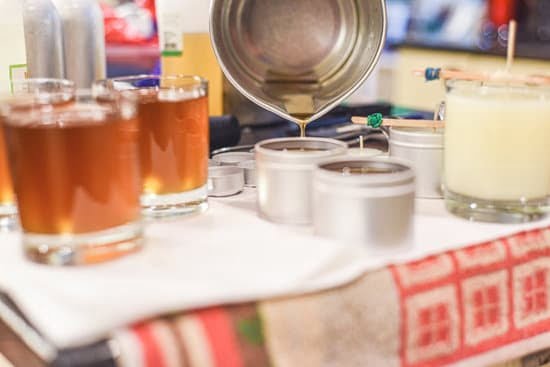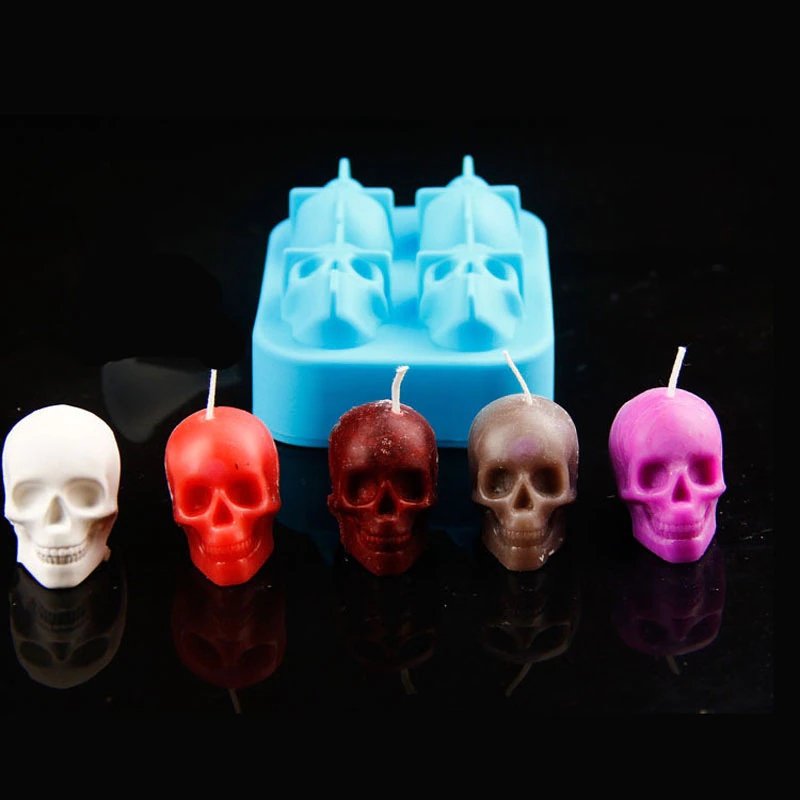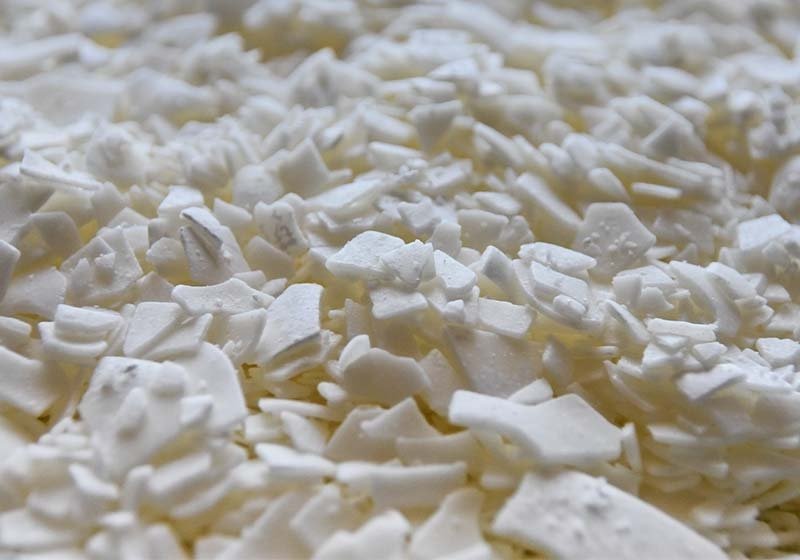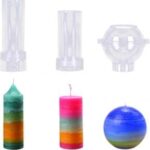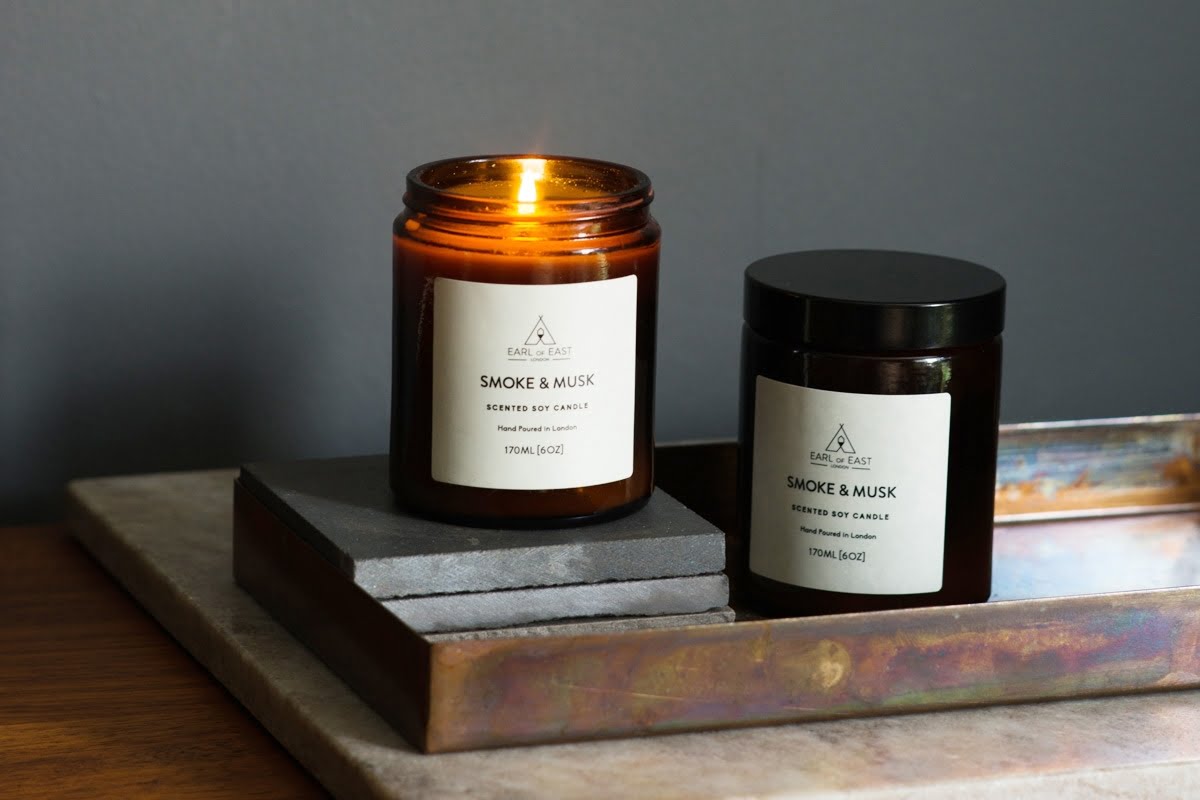Scented candles have become an increasingly popular trend, bringing warmth and ambiance to any space. One of the key elements that contribute to the allure of scented candles is the use of essential oils. These oils not only provide a pleasant fragrance but also have numerous benefits for our well-being. However, figuring out how many drops of essential oil to use for candle making can be a daunting task for beginners.
In this article, we will delve into the art of scented candles and explore the importance of using essential oils in their creation. We will uncover the science behind essential oils and aromatherapy, as well as their psychological and emotional impact. Additionally, we will guide you in choosing the right essential oil for your candle-making endeavors based on personal preferences and compatibility with various candle waxes.
Safety is paramount when working with essential oils, so we will highlight the necessary precautions you need to take during the dilution and handling process. Furthermore, we will address how drop count plays a crucial role in achieving the desired scent strength in your candles, considering factors such as candle type and size.
Lastly, we want to ignite your creativity by encouraging you to experiment with essential oil blends for unique candle scents. We’ll share tips on maintaining balance and harmony when creating your own scent profiles. So whether you are a beginner or a seasoned candle maker, this article will equip you with the knowledge needed to unleash your creativity in creating sensational scents with just the right amount of essential oils.
The Science Behind Essential Oils and Aromatherapy
Understanding Aromatherapy and its Benefits
Aromatherapy is an ancient practice that has gained significant popularity in recent years. It involves the use of natural plant extracts, known as essential oils, to promote physical, mental, and emotional well-being. These essential oils are derived from various parts of plants such as flowers, leaves, bark, or roots. When used in candle making, essential oils infuse the candles with their unique scents, allowing for a more immersive and therapeutic experience.
The benefits of aromatherapy are wide-ranging. Inhalation of these natural scents can have a direct impact on our brain’s limbic system, which controls emotions and memories. Different essential oils can elicit different emotional responses and help in managing stress, anxiety, or insomnia. Furthermore, certain scents can also stimulate focus and concentration while others promote relaxation and better sleep quality.
The Role of Essential Oils in Candle Making
Essential oils play a crucial role in candle making as they dictate the fragrance profile of the final product. These highly concentrated plant extracts are powerful enough to provide a long-lasting aroma when diffused into the air through candles. Unlike artificial fragrances that may contain harmful chemicals or synthetic compounds, essential oils offer a natural alternative that not only smells pleasant but also delivers potential therapeutic benefits.
When selecting essential oils for candle making, it is important to consider their compatibility with various candle waxes. Some essential oils work better with soy wax due to its porous nature and ability to hold scent well. On the other hand, certain waxes like beeswax have their own distinct scent which may interfere with or alter the desired fragrance notes. Understanding these nuances will ensure that your candles achieve the desired aromatic experience.
In addition to choosing compatible essential oils for your candle wax type, understanding fragrance notes is also key. Fragrance notes refer to the different layers of scent that are released over time. Essential oils are categorized into top, middle, and base notes based on their evaporation rates. Combining different notes in your candle fragrance blend can create a harmonious and complex scent profile that unfolds as the candle burns.
Choosing the Right Essential Oil for Candle Making
When it comes to candle making, choosing the right essential oil is crucial in creating a captivating and aromatic experience. With a wide variety of options available, it can be overwhelming to know where to start. However, by considering personal preferences, fragrance notes, intensity, and compatibility with different candle waxes, you can find the perfect essential oils for your candle creations.
To begin the process of choosing the right essential oil for your candles, consider your personal preferences in scents. Do you prefer floral and sweet aromas or earthy and woody notes? Are you looking for a calming scent or one that invigorates your space? By determining what scents bring you joy and relaxation, you can narrow down your options and create candles that resonate with your personal taste.
Next, consider the fragrance notes of essential oils. Fragrance notes are categorized into top, middle, and base notes. Top notes provide an initial burst of aroma but tend to evaporate quickly.
Middle notes act as the heart of a fragrance and give it depth and body. Base notes have a longer-lasting scent profile and act as anchors for other fragrance notes. By blending different essential oils with varying fragrance notes, you can create complex and nuanced scents for your candles.
Intensity is another factor to consider when choosing essential oils for candle making. Some essential oils have strong fragrances that require fewer drops to achieve the desired scent strength, while others may be more subtle and need slightly more drops. Consider how potent you want your candles’ scent to be and choose essential oils accordingly.
Lastly, ensure compatibility between the chosen essential oil and the type of wax used in candle making. Certain waxes may not blend well with certain essential oils, which could potentially affect the overall quality of your candles’ scent throw. Research which essential oils are best suited for the type of wax you are using to ensure optimal results.
By considering personal preferences, fragrance notes, intensity, and compatibility with candle waxes, you can confidently choose the right essential oils for your candle making endeavors. With the perfect combination of scents, you can create candles that fill your space with beautiful fragrances and bring joy to those who experience them.
Safety Precautions
Importance of Diluting Essential Oils
When it comes to candle making with essential oils, it is crucial to prioritize safety. One important aspect of safety is dilution. Essential oils are highly concentrated and potent substances that can cause skin irritation or allergic reactions if used undiluted. Therefore, it is essential to dilute essential oils properly before adding them to your candles.
To dilute essential oils for candle making, you will need a carrier oil such as coconut oil or almond oil. The carrier oil helps distribute the essential oil evenly throughout the wax and prevents any adverse reactions. A general guideline for dilution is to use 1 ounce of carrier oil for every 5-10 drops of essential oil.
Recommended Dilution Ratios and Candle Sizes
The recommended dilution ratios for different candle sizes vary depending on personal preferences and the desired scent intensity. For small votive or tealight candles, a safe starting point would be to use 1-2 drops of diluted essential oil per ounce of melted wax.
For larger container candles, such as those in jars or tins, you may need more drops of diluted essential oil to achieve a noticeable scent throw. A good range to start with would be 4-8 drops per ounce of melted wax.
It is important to note that these are general guidelines, and you can always adjust the number of drops based on your personal preference and the strength of the specific essential oils you are using. Keep in mind that some fragrance notes might be stronger than others, so you may need fewer drops for certain scents.
Proper Handling and Storage for Safety
In addition to diluting your essential oils correctly, it is crucial to handle and store them properly to ensure maximum safety during your candle making process. Here are a few tips:
- Always wash your hands thoroughly after handling essential oils to avoid any accidental contact with your eyes or mouth.
- Keep essential oils out of reach of children and pets. These concentrated substances can be harmful if ingested.
- Store your essential oils in dark glass bottles, away from direct sunlight and heat. This helps preserve their potency and extends their shelf life.
- Label your essential oil bottles clearly to avoid any confusion or accidental misuse when creating your scented candles.
By following these safety precautions, you can enjoy the art of candle making with essential oils while ensuring a safe and enjoyable experience. Remember that safety should always be a priority in your creative process, allowing you to fully immerse yourself in the wonders of scent and ambiance that scented candles provide.
Determining the Ideal Number of Drops for Candle Making
When it comes to candle making, the number of drops of essential oil used can greatly impact the final scent strength and overall experience. The right amount of essential oil can create a captivating and inviting aroma, while too little may result in a weak fragrance and too much could overpower the senses.
In this section, we will explore the significance of drop count in achieving the desired scent intensity and provide some guidelines to help you determine the ideal number of drops for your candles.
The ideal number of drops for candle making depends on various factors such as the type and size of candles being made, as well as personal preference for scent intensity. Container candles, which are housed in jars or containers, tend to require fewer drops compared to pillar candles due to their smaller surface area exposed to air.
For container candles, it is recommended to start with approximately 20-30 drops of essential oil per 8 ounces of wax. This can be adjusted based on personal preference by experimenting with different drop counts until the desired scent strength is achieved.
On the other hand, pillar candles, which are taller and wider with more exposed wax surface area, typically require more drops of essential oil for a stronger scent throw. A general guideline for pillar candles is to use around 50-60 drops per pound of wax. Keep in mind that these are starting points and may need to be adjusted based on factors such as the specific essential oils being used and personal preference.
To help you determine the ideal number of drops for your candle making project, consider using a fragrance calculator tool that takes into account factors such as candle type, wax type, fragrance load percentage, and desired scent throw. These online tools can provide more precise recommendations based on these variables.
Remember that everyone’s preference for scent strength varies, so don’t be afraid to experiment with different drop counts until you find your perfect balance. As you become more experienced in candle making, you will develop a better understanding of how different essential oils behave and interact with various waxes, allowing you to fine-tune the number of drops to achieve the desired scent intensity.
Experimenting with Essential Oil Blends for Unique Candle Scents
Creating unique scents for your homemade candles is an exciting part of the candle making process. By experimenting with essential oil blends, you can unlock a world of possibilities and create personalized aromas that reflect your preferences and style. Here are some tips to inspire your creativity and guide you in blending essential oils for unique candle scents.
- Start with a Basic Understanding: Before you begin blending, it’s important to have a basic understanding of fragrance notes. Fragrances typically have top notes, middle notes, and base notes. Top notes are the first scent you smell when the candle is lit, whereas base notes provide depth and longevity to the fragrance.
Middle notes act as a bridge between the two. By incorporating oils from different fragrance note categories, you can create complex and layered scents. - Consider Complementary Oils: When blending essential oils, consider combining scents that complement each other well. For example, lavender and bergamot create a calming and relaxing blend perfect for winding down after a long day. Experiment with combinations like citrus and floral or woodsy and herbal to find unique blends that suit your preferences.
- Maintain Balance and Harmony: While experimenting with essential oil blends, it’s important to maintain balance and harmony within the fragrance profile of your candle. Avoid overwhelming or conflicting scents that could result in a less pleasant aroma. It’s recommended to start with small amounts of each essential oil within a blend until you achieve the desired scent balance.
| Essential Oil Combination | Scent Profile |
|---|---|
| Lavender + Rosemary | Calming and refreshing |
| Lemon + Eucalyptus | Uplifting and invigorating |
| Sandalwood + Vanilla | Warm and comforting |
Remember, the possibilities are endless when it comes to blending essential oils for candle making. Don’t be afraid to experiment with different combinations and proportions to create your own signature scents. Enjoy the process of discovering unique aromas that will enhance your candle making experience.
Factors Influencing Scent Throw in Candle Making
When it comes to scented candles, the aroma they release is a crucial factor in creating a pleasant and inviting atmosphere. The scent throw refers to how well the fragrance of a candle spreads throughout a space. However, several factors can influence the scent throw, and understanding these factors can help you optimize the diffusion and longevity of your candle scents.
- Room Size: The size of the room where the candle will be used plays a significant role in scent throw. Larger rooms require a stronger scent intensity to fill the space adequately. If you have a larger room, consider using multiple candles or opting for stronger essential oil concentrations.
- Air Circulation: The airflow within a room can affect the spread of candle aromas. Areas with good air circulation allow scents to disperse more easily, enhancing scent throw. To maximize scent diffusion, place your candles away from open windows or doorways that might create drafts.
- Candle Placement: Proper placement of candles also determines their scent throw. Placing candles at elevated positions, such as on shelves or mantels, can help distribute the fragrance more effectively throughout the room. Additionally, strategic placement near vents or fans can aid in dispersing scents.
To optimize the scent throw of your scented candles even further, here are some additional suggestions:
- Increase Surface Area: For container candles, choose wider vessels that expose more wax surface area to enhance evaporation and improve fragrance release.
- Use Scent Diffusers: Consider utilizing diffusers alongside your candles for an added boost in fragrance dispersion. Reed diffusers or electric diffusers can help create a multi-layered aroma experience.
- Experiment with Candle Types: Different candle styles have varying heat temperatures and burning speeds that affect scent release. Experiment with different candle types like pillar candles versus container candles to find which works best for your desired scent throw.
By considering these factors and implementing the suggested strategies, you can optimize the scent throw of your handmade scented candles and create a truly immersive sensory experience in any space. Experiment, explore, and find the perfect balance to unleash your creativity with essential oils in candle making.
Troubleshooting and Fine-tuning Scent Intensity
Creating the perfect scent for your candle can sometimes be a bit challenging. You may find yourself facing the dilemma of an overpowering or weak fragrance, but fear not. There are solutions to help you fine-tune the scent intensity and achieve the desired aroma for your candles.
One common challenge is dealing with overpowering candle fragrances. If you find that your candle scent is too strong and overwhelming, there are a few strategies you can try. First, consider reducing the number of essential oil drops in your candle recipe. Start by diluting the essential oils further to lower their concentration in the wax. Experiment with smaller drop counts until you achieve a more balanced fragrance.
On the other hand, if your candle scent is too weak and lacks intensity, there are ways to boost it without overpowering it. One option is to increase the number of essential oil drops gradually. Start by adding a few extra drops to your candle recipe and test how it affects the scent. Remember to take notes of each adjustment so that you can recreate successful results in future batches.
Another technique to enhance scent intensity is through layering scents. Try using essential oil blends that complement each other to create a more complex aroma profile. For example, combining lavender and cedarwood essential oils can produce a soothing and calming scent with added depth.
Remember that achieving the ideal scent intensity is subjective and may require some trial-and-error experimentation. It’s essential to document your adjustments, noting both successful outcomes and unsuccessful attempts. By doing so, you can develop your own personalized recipes over time.
Conclusion
In conclusion, the use of essential oils in candle making offers a world of creative possibilities. By understanding the art of scented candles and the science behind essential oils, you can create unique and captivating fragrances that enhance your space and elevate your mood. Whether you prefer soothing lavender for relaxation or invigorating citrus for a burst of energy, there is an essential oil out there to suit your personal preferences.
Choosing the right essential oil involves considering factors such as fragrance notes, intensity, and compatibility with different candle waxes. Dilution and proper handling are also crucial for safety purposes. By following recommended dilution ratios and understanding how to store and handle essential oils correctly, you can ensure a safe environment while enjoying the many benefits they offer.
Experimenting with essential oil blends opens up endless possibilities for creating scents that are truly one-of-a-kind. Blending different oils allows you to create personalized fragrances for specific moods or occasions. It’s important to maintain balance and harmony in these blends to ensure a pleasant aroma that doesn’t overpower or clash with other scents in your space.
Ultimately, discovering your own unique scented candle creations is an exciting journey that unleashes your creativity. Embrace the opportunity to craft a sensory oasis with handmade candles using just the right amount of essential oils. With a little experimentation, exploration, and a touch of imagination, you can transform simple wax into stunning works of olfactory art that bring joy, serenity, or any desired mood into your life. Let your creativity flourish as you embark on this aromatic endeavor.
Frequently Asked Questions
What is the ratio of essential oils to candle wax?
The ratio of essential oils to candle wax can vary depending on personal preference and the strength of scent desired. Generally, a common guideline used is to add about 1 ounce of essential oil for every pound (16 ounces) of candle wax.
This translates to a ratio of approximately 1:16. However, it’s crucial to note that different oils have different intensities, so it’s advisable to start with a smaller amount and gradually increase the quantity until the desired fragrance is achieved.
How many drops of essential oil for 4 oz soy candle?
When making a 4 oz soy candle, the number of drops of essential oil required will depend on the specific oil being used and personal preferences regarding scent strength. As a general starting point, many people recommend using approximately 20-30 drops of essential oil for a 4 oz soy candle.
It’s important to remember that some oils are more potent than others, so adjusting the number of drops accordingly may be necessary to achieve the desired fragrance level.
How much essential oil do I put in a 10 oz candle?
For a 10 oz candle, the amount of essential oil needed again depends on individual preferences and the specific oil being used. As an initial estimate, it is suggested to use around 40-60 drops of essential oil for a 10 oz candle.
However, this can vary based on how strongly scented one prefers their candles or if they are using particularly potent or subtle oils. Experimentation may be necessary to find the perfect balance for each individual’s fragrance preference in their 10 oz candle.

Welcome to my candle making blog! In this blog, I will be sharing my tips and tricks for making candles. I will also be sharing some of my favorite recipes.

